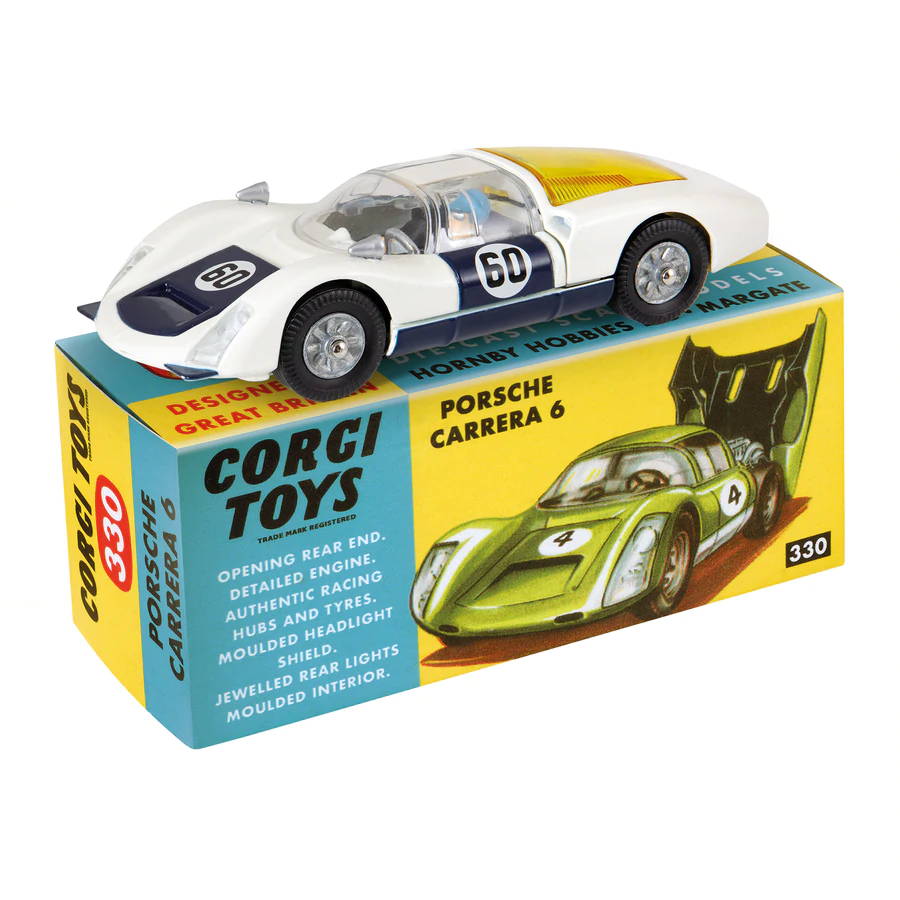Ferdinand Porsche’s grandson had just taken the helm of the company’s race-team making an immediate impact. By the start of the 1966 season, out went the pressed steel body and the outdated Porsche 904; in came the new streamlined fibreglass body that was 250lbs lighter with gullwing doors and a phenomenal drag coefficient of just .35. Doubtless, Ferdinand Piech was heavily influenced by his fruitful collaboration with Graham Chapman’s Formula One Team, as the Porsche added the Lotus F1 suspension to its new glass fibre body. Throw in a superlight alloy 6-cylinder 2-litre mid-engine powerplant and you have the Porsche 906. Not only was it the real deal as a racing car package that went on to sweep all before it in its “medium” engine class, but it looked a million dollars too.
Earlier in the 1966 racing season, the warning signs for competitors were ominous. The Carrera 6, as it quickly became known, beat the Ferrari Dino cars at Daytona. Then on the 8th May a non-works Carrera 906 won the arduous Targa Florio in the ferocious Sicilian heat. But the best was saved for the Big One. While the Ford GT40 and the Ferrari 275s fought over the 5-litre large engine class, the Germans completely dominated their category of the now legendary 1966 Lemans 24 hours Endurance Race, winning the 2-litre medium class. In the final analysis, Porsche finished a remarkable 4th, 5th, 6th, and 7th overall with the highest placed Carrera 6 driven by Jo Siffert and Colin Davis, finishing just 9 laps out of 360, behind the 1st, 2nd and 3rd placed 7-litre V8 GT40s!
An astonishing result that marked the beginning of a new era in German sports car engineering. As with the Lotus Team in Formula One, smaller engine-powered, nimble, lightweight cars came to dominate the rest of the motor racing world.
The success brought by the Porsches spilled over into road car engineering too. Marques like BMW, Mercedes and Porsche became wedded to 6-cylinder engines that have since become a watchword for Teutonic efficiency and performance in German motor manufacturing. Meanwhile their larger, inefficient cousins, no doubt influenced by the victorious GT40s, went the way of the dinosaurs in the wake of the 1970s oil shock.
And for Ferdinand Piech, who eventually became CEO of Porsche and Volkswagen and a giant of the all-conquering German motor industry and his team of engineers from the Black Forest, the agile Carrera 6 became a true motor racing legend.
Corgi Toys were at their zenith too - a world-beater in their own right – creating diecast models in their Swansea factory that thrilled generations of children. They did the victorious Carrera 6 proud by issuing it in its 1966 Porsche racing team livery.
A museum quality diecast model – an heirloom of the future
This remains one of their most iconic models of all time, and a most desirable one for collectors of this iconic British toy brand to this day. A genuine Corgi Toys re-issue that’s now yours to proudly own. And now, we are delighted to have re-created this fully authentic die-cast reissue - completely faithful to the 1966 Carrera 6 model – at a fraction of the cost of an original!








